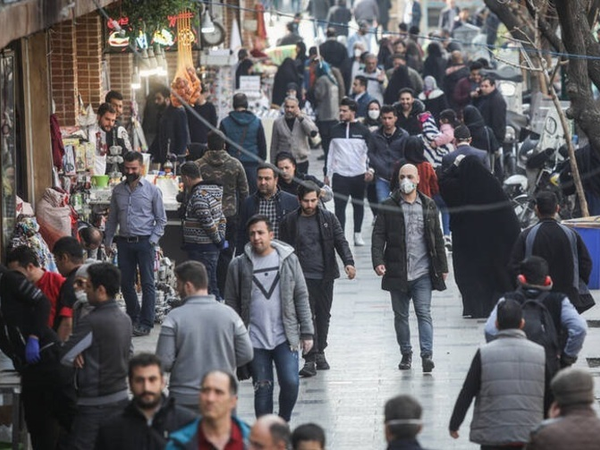Iran's population looks set to halve by the end of the century as birth rates continue to fall in spite of efforts by the government to incentivize larger families.
Addressing rapid demographic shifts, Deputy Health Minister Alireza Raisi warned on Sunday that declining birth rates could lead to a significantly smaller, aging population, with projections indicating a sharp decline. By 2101, the population could shrink by as much as 50%, with nearly half of the country potentially classified as elderly.
Raisi said that Iran has experienced one of the world’s fastest fertility declines, dropping from an average of six children per family to fewer than three within just a decade. If the trend continues, he explained, the country’s total population could decrease to around 42 million by the end of the century—a drastic change from the current level, which is over 87 million.
“This means half of Iran’s population will be elderly,” Raisi added, urging awareness of the potential social and economic consequences that such a shift may entail.
The issue of Iran’s aging population has drawn concern among officials and demographic experts alike. Hesameddin Allameh, former head of Iran's National Elderly Council, recently described a looming demographic pitfall, as nearly 10 million Iranians are now classified as elderly.
He said that today, the provinces of Gilan and Mazandaran have the oldest populations in Iran, while Sistan-Baluchestan and Hormozgan remaining the youngest, highlighting disparities across the country.
Despite calls from senior leaders, including Supreme Leader Ali Khamenei, for families to increase the national birth rate, these efforts have shown limited success. In spite of banning legal abortion, and offering benefits such as free land and insurance coverage, the government has failed to stem the tide.
Data from the National Organization for Civil Registration indicated a decrease of 17,000 births in 2023 compared to the previous year, suggesting that the government’s pro-natal policies have struggled to gain traction.
The main factor driving this decline is the economic crisis which has seen over a third of Iranians now living below the poverty line, with inflation staying above 40% for five consecutive years. Other factors include shifting social norms, and urban lifestyle changes, which are increasingly affecting family planning choices.
In addition to Iran’s internal population shifts, Raisi raised concerns about the nation’s demographics relative to its neighbors. While Iran looks likely to soon face a population decline, nearby countries are projected to experience significant population growth.
This disparity, he argued, could have serious implications for Iran's economic and geopolitical standing in the region if current trends persist.
The demographic challenge is contrasted by the country’s annual death rate, currently around 450,000, and an annual birth rate of roughly one million. With a net population increase of approximately 550,000 people each year, the nation is seeing its growth rate decline.
Raisi cautioned that, without meaningful policy changes, Iran could face an existential threat. “If the situation persists, in 100 years, there will be no country called Iran,” he stated, calling for unified action among government officials to confront the issue.
Shahla Kazemipour, a demographer and university professor, said the birth rate decline is nationwide, indicating that the trend will likely continue without targeted intervention. Kazemipour added that Iran’s aging population, which is becoming an inevitable reality, will pose significant economic and social challenges in the coming decades, on top of the country's crisis amid global sanctions.
Currently, the country’s elderly population stands at around seven million, approximately 8% of Iran’s total population, according to Ahmad Moazen Zadeh, head of the Iranian Physiotherapy Association. With the projected growth of this demographic, health and social services are preparing for increased demand, which will require extensive planning and resources to manage.
As Iran contends with the realities of an aging society and the potential for long-term population decline, the future stability of its workforce, economic resilience, and healthcare infrastructure may depend on policy reforms designed to encourage sustainable demographic growth.
